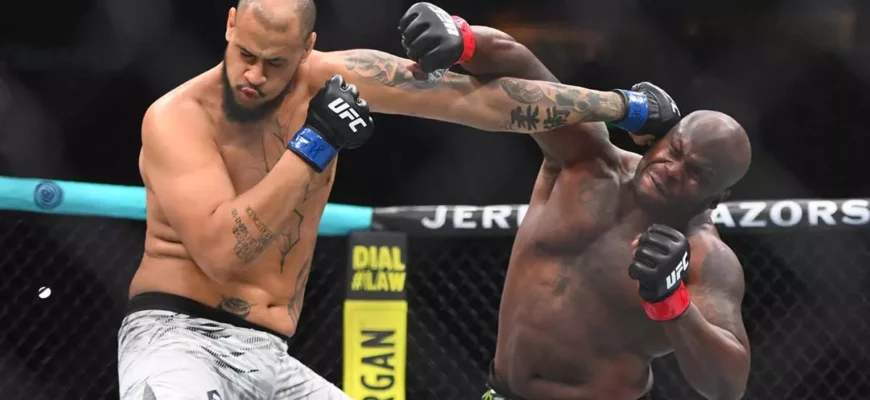UFC Nashville delivered an evening of electrifying mixed martial arts, showcasing high-stakes victories and heart-wrenching defeats. Fighters pushed their physical limits, thrilling audiences with displays of skill, power, and resilience. Yet, beyond the roar of the crowd and the celebratory post-fight interviews, lies a less visible but equally critical aspect of professional combat sports: the medical aftermath. For every punch thrown and every submission secured, there`s a subsequent medical evaluation designed to protect the athletes.
The Unseen Protocols: Understanding Medical Suspensions
In the world of professional fighting, athletic commissions serve as the vital guardians of fighter safety. After every event, each competitor undergoes a thorough medical assessment. Based on the findings, a medical suspension may be issued, effectively putting a fighter on a mandatory timeout. These suspensions are not punitive measures; rather, they are crucial protective protocols. Their primary purpose is to ensure that athletes have adequate time to recover from the physical trauma inherent in combat sports before they can step back into the cage. The duration of these suspensions varies significantly, directly reflecting the perceived severity of the impact sustained or the nature of any observed injury.
A Spectrum of Recovery: From Days to Months
The recent UFC Nashville event provides a clear snapshot of this intricate system, with fighters receiving suspensions ranging from a mere seven days to a more substantial 180 days. While specific injury details are typically not disclosed to the public – a standard practice to maintain fighter privacy – the length of a suspension offers a general indication of the physical toll a fight has taken:
- Seven-Day Suspension: These are the most common and often routine, typically issued as a standard rest period with no contact allowed. They indicate a fighter emerged relatively unscathed, perhaps with minor bruising or general fatigue.
- Thirty to Sixty-Day Suspensions: This mid-range indicates a more significant impact, frequently associated with concussive effects or general body trauma. Such suspensions usually include a mandatory period of “no contact” training to allow the brain and body to heal without further stress.
- One Hundred Eighty-Day Suspensions (or Until Cleared by Doctor): These are reserved for cases where there`s a potential for more serious injury, such as fractures, significant ligament damage, or severe concussions. The “until cleared by doctor” clause is critical, meaning the fighter cannot compete again until a specialist has given them a clean bill of health, often requiring follow-up imaging or evaluations.
UFC Nashville`s Medical Roll Call: Notable Cases
The Nashville card offered a fascinating study in post-fight recovery periods:
- Derrick Lewis: The Quick Recovery Artist
After his astonishing 35-second knockout victory in the main event, Derrick Lewis received a remarkably brief seven-day suspension. This swift turnaround highlights a paradoxical efficiency: delivering a rapid knockout often means minimal physical exertion for the victor, translating into equally swift medical clearance. His opponent, Tallison Teixeira, on the other hand, was handed a more typical 45-day suspension, illustrating the immediate consequences of being on the receiving end of such decisive power. - The 180-Day Club: A Deeper Concern
Three fighters from the Nashville card found themselves on the longer end of the spectrum, each receiving a 180-day suspension or until medically cleared: Mike Davis, Junior Tafa, and Kennedy Nzechukwu. What makes Davis`s case particularly noteworthy is that he secured a stoppage victory over Mitch Ramirez, yet still garnered a lengthy sit. This underscores that even a win doesn`t exempt a fighter from potentially significant injury; the nature of the damage, rather than the fight`s outcome, dictates the recovery period. For Tafa and Nzechukwu, who both lost by submission, their extended recovery periods hint at injuries sustained beyond the specific method of defeat. - The Standard Set: Mid-Range Suspensions
Many other prominent fighters, including co-main event winner Gabriel Bonfim (30 days) and veteran contender Stephen Thompson (45 days) after a gruelling contest, received standard mid-range suspensions. These are the typical costs of doing business in the Octagon: the expected wear and tear that necessitates a few weeks of rest and recuperation to prevent long-term damage.
It`s a stark reminder that while the lights and cameras focus on the action inside the cage, the true battle for a fighter`s health often begins only after the final bell. The medical suspensions are the unglamorous, yet absolutely essential, epilogue to every fight card, ensuring the athletes who entertain us can continue to do so safely in the future.
The medical suspension list from UFC Nashville serves as a quiet testament to the physical demands of professional MMA. It`s a critical mechanism that balances the thrilling spectacle of combat with the paramount need for athlete welfare. While fans remember the knockouts and submissions, the true unsung heroes might just be the medical professionals and athletic commissions ensuring that every fighter gets the necessary time and care to recover, ready to face another day – and perhaps, another fight – safely.







